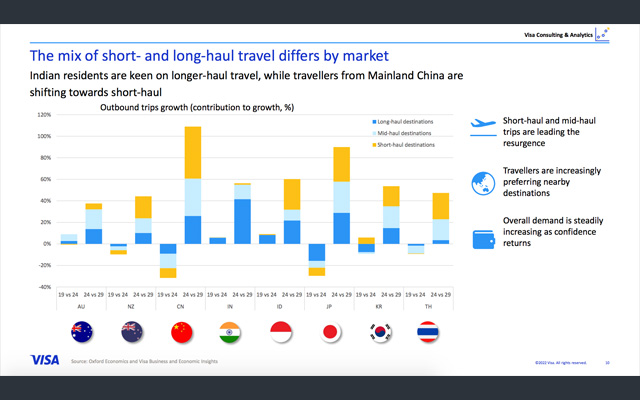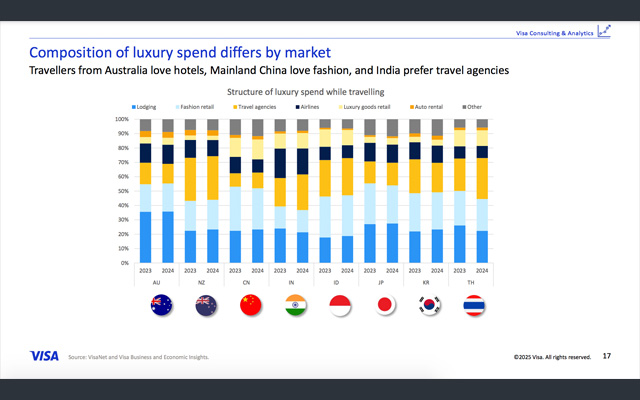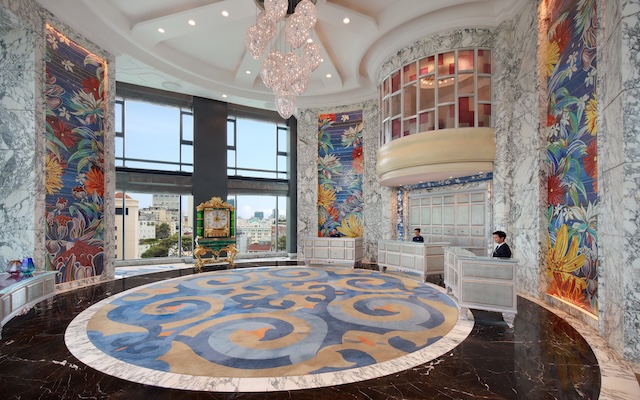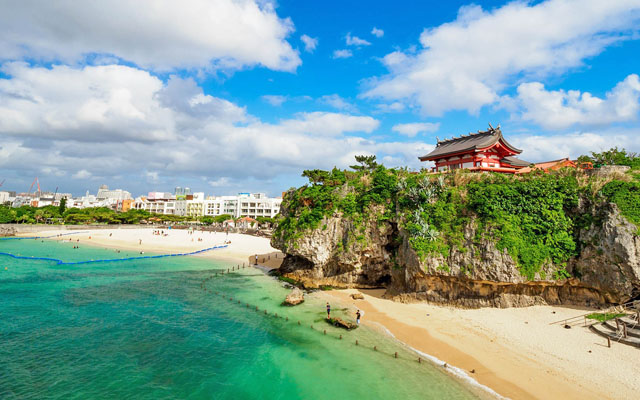A market intelligence update presented by Visa Business and Economic Insights at the Opening Forum for ILTM Asia Pacific 2025 on Monday evening has painted a promising picture for luxury tourism industry stakeholders. Visa sees opportunities in an aging but increasingly affluent population in Asia-Pacific, along with emerging source markets as well as wellness being a top travel motivator.
Simon Baptist, principal Asia-Pacific economist at Visa Business and Economic Insights, started his presentation with a caveat: “This is the time where there is so much change and so much unpredictability in the international environment.”

Baptist stated that despite volatility in the international environment, Asia-Pacific has continued to grow “very fast”, due to urbanisation of populations, internationalisation into the global supply chains, and government reforms towards more efficient economies.
“Asia has done a better job (at these things) than any other region in the last few decades,” said Baptist. “Hence, the big rise in the number of not just average wealth, but also the big rise in the number of affluent people.”
But growth in Asia is “getting tougher” due to three reasons: China’s big slowdown, where growth will moderate downwards to around three per cent by the end of the decade; higher interest rates that will impact cost of capital and investment, which has been the core generator of wealth for the region; and the change in geopolitics as a result of international trade barriers, dampening internationalisation that has been fuelling the region’s growth.
“We still have a good picture (in Asia-Pacific), but growth is not going to be as easy as it was,” he stated.
Elaborating on what defines a “good picture”, Baptist highlighted Asia-Pacific’s growing affluent population. Visa’s research shows that 48 per cent of the world’s new affluent will be in Asia-Pacific, with current analysis estimating a total addressable market of US$2.14 trillion across 10 key markets in the region.
Furthermore, as Asia’s population ages, it is also becoming wealthier – a trend that, according to Baptist, is giving rise to new consumer segments in the region.
Providing an overview of population changes in this region, Baptist shared that the populations of Japan, South Korea and China are shrinking. Meanwhile, core population growth in the region stems from India and Indonesia, while immigration flows are lifting the population in New Zealand and Australia, and creating new markets for luxury travel businesses to tap into.
He added that while Japan and Australia have historically been the two largest sources of high net worth individuals (HNWIs) in the region, China has overtaken to become number one since the pandemic and remains the dominant source of elite spenders despite economic woes.
Baptist also discussed changes in currency valuations as a factor influencing spending power in Asia-Pacific. He noted that the region has witnessed “massive changes”, where the Japanese yen has weakened by 45 per cent against the green back, the Korean won is down about 30 per cent, and the Chinese yuan is down by about 20 per cent.
“On the hand, some places have strong currencies, like Hong Kong, Singapore, and Thailand, allowing consumers from these markets to have more spending power out in the international environment at the moment,” he remarked.

He pointed to business opportunities in following where outbound growth is occurring in the region. Massive growth is observed in the Philippines and India, although these markets do not spend as much as the affluent in China and Australia.
Travellers from the Philippines and India spend about US$1,000 per trip, whereas Chinese or Australians would spend about US$3,000, according to Visa findings.
Vietnam and Indonesia are new source markets to watch, added Baptist.
While travel motivations may differ in a region as diverse as Asia-Pacific, Visa research shows that HNWIs in the region have five main priorities when making spending decisions: focus on physical health and well-being; pursuit of long-term financial security; focus on family and social relationships; expressing wealth through cultural proficiency; and seeking curated luxury goods and experiences.
Breaking travel motivations down by geographical source markets, Baptist said Relaxation was a strong motivator for affluent travellers from Taiwan and Hong Kong while Spending time with family/friends was most important for affluent travellers from Malaysia, South Korea, and New Zealand.
Travel plans of regional travellers are also shaped by desires for culinary experiences, shopping, cultural activities, seasonal attractions, theme parks, and visiting family/friends who are living overseas.

















